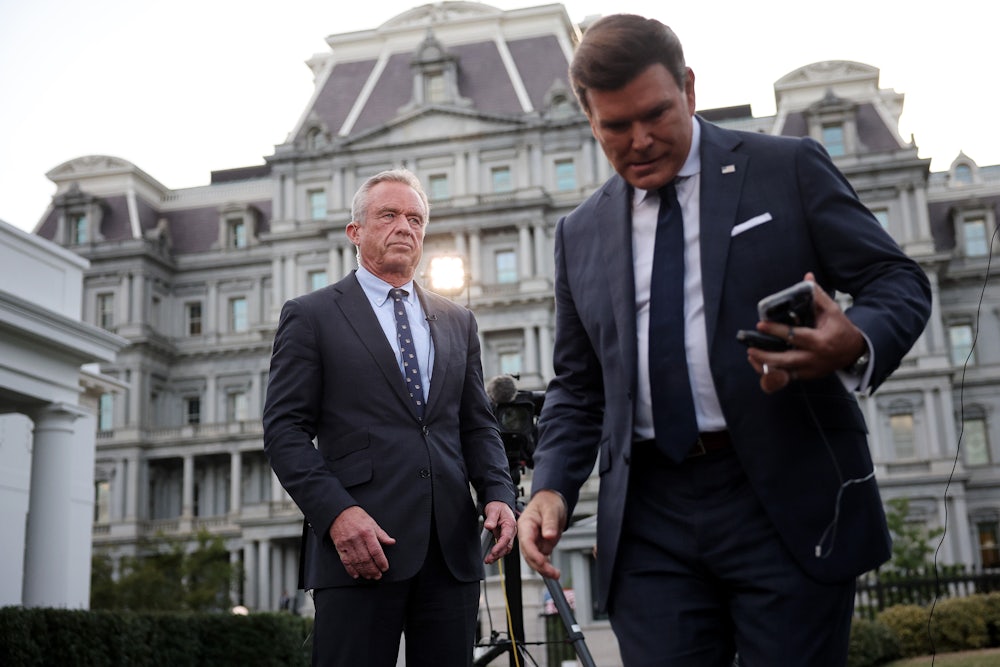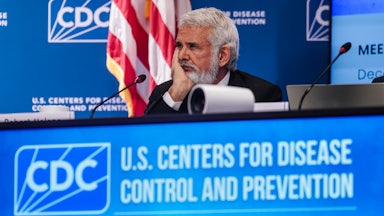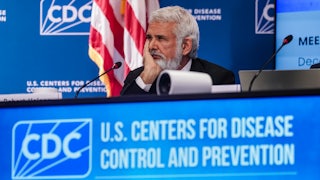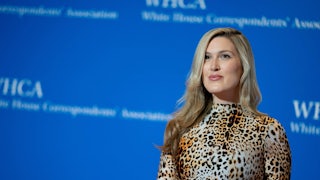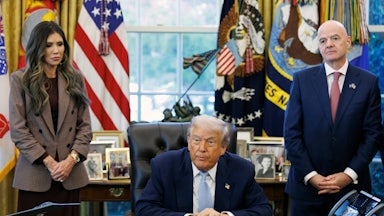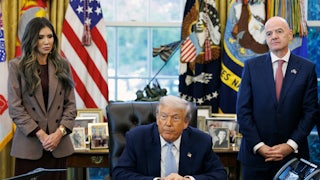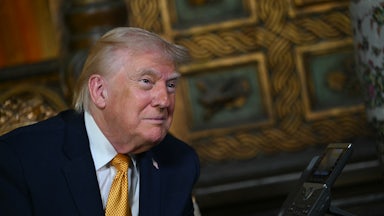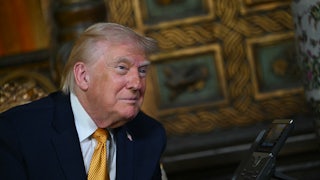As Health and Human Services secretary, Robert Kennedy Jr. is a menace to us all and ought to be removed as soon as possible. But he’s right about one matter, and, in a break from his usual practice (omnidirectional quackery), he finds himself in total accord with the medical establishment. The issue is direct-to-consumer prescription drug advertising. It’s out of control.
The Trump White House put out an executive order last week directing Kennedy, a longtime critic of pharmaceutical advertising, to impose “accuracy and transparency” on direct-to-consumer ads and specifically to increase information in those ads about potential risks. The only trouble with this order is it may not go far enough. The ads should be removed entirely from TV and the internet, as Kennedy has previously supported.
The proximate target of Trump’s executive order is a regulatory “adequate provision” loophole created in the late 1990s that allowed pharmaceutical companies to limit disclosure of potential side effects in direct-to-consumer ads. Whereas print ads were required to provide a “brief summary” of risks identified in Food and Drug Administration–approved labeling, broadcast and web ads were required only to identify “major risks.” Drug companies took maximum advantage of the loophole, and a 2024 study in the Journal of Pharmaceutical Health Research found that only one-third of drug ads on social media mentioned risks at all. The FDA has tried over the years to refine its definition of “major risks,” most recently during the Biden administration. Still, enforcement actions remained rare, with only one enforcement letter sent by the Biden FDA in 2023 and none in 2024.
Before the 1980s, pharmaceutical manufacturers had no interest in marketing prescription drugs directly to consumers; they understood their customers to be doctors and hospitals. That changed in 1981, when Boots Pharmaceuticals aired a TV ad that flagged to consumers that its prescription pain reliever Rufen was exactly the same stuff as a more popular prescription pain reliever, Motrin, and that Rufen was cheaper. (Both were ibuprofen, which was not yet available over the counter.) The FDA was utterly unprepared for this. It ordered the ad taken down, then allowed it back up on the air with a few minor changes, then took it down again. The following year, while the FDA struggled to come up with a policy, Merck and Dohme took out ads to market a pneumonia vaccine, Pneumovax, to seniors, after its own market research indicated that the vaccine wasn’t particularly effective.
The Boots ad showed how drug companies could use advertising to wise up consumers on a matter their doctors probably never thought about; the Merck and Dohme ad showed how they could use advertising to pull the wool over consumers’ eyes. Want to guess which later became the prevailing model? Two 2023 studies published by The Journal of the American Medical Association found that two-thirds of advertised prescription drugs had low therapeutic value and that companies spent the most money on ads for products that delivered the least benefit. (I’m grateful to Bloomberg’s Lisa Jarvis for citing these.)
I can’t overemphasize how weird everybody found prescription drug TV commercials at first. As late as 1984, most of the pharmaceutical industry was deeply wary of direct-to-consumer marketing. “We believe that the need for the physician’s supervision of any prescription drug taken by the patient is paramount,” said a vice president for Eli Lilly that year. Amen. The chairman of Upjohn and a vice president at Schering-Plough said much the same.
But the TV commercials kept coming, and the president was a guy (Ronald Reagan) who wanted government to get out of industry’s way. So in 1985 the FDA said all right, fine, they’re legal provided the ads disclose possible side effects and other relevant consumer information. When that proved cumbersome, the FDA threw up its hands and created the adequate provision loophole. (That happened, one academic history notes pointedly, very soon after David Kessler, a reform-minded FDA commissioner and a stern critic of drug advertising, departed the agency.) By then, Big Pharma had shed all its inhibitions about marketing direct to consumers. “The industry had won,” observed Dylan Scott in a 2015 Stat story. “Spending on all direct-to-consumer advertising ballooned from $360 million in 1995 to $1.3 billion in 1998. By 2006, it hit $5 billion, and most of that was on television commercials.”
The American Medical Association doesn’t want direct-to-consumer prescription drug ads reformed; it wants them banned—and it was on the scene well before Kennedy sidled up to Trump. In a 2015 statement, the AMA blamed the ads for driving up drug costs, both by increasing Big Pharma’s marketing costs and by inflating demand for expensive drugs that “may not be appropriate” for all the patients to whom its wares were marketed.
The difference between the Trump administration’s proposed reform and an outright ban may not be all that great. That’s what Kessler told The New York Times last week. (The Times story didn’t make sufficiently clear that the Trump directive’s being a de facto ban is what Kessler likes about it.) For that reason, the Trump FDA may face the same First Amendment legal challenge that the drug companies would bring against an outright ban. But I don’t recall the United States being an unfree country back in the 1960s and 1970s, when no such advertising existed. If anything, we had freer speech then. Also not unfree are various “peer nation” advanced democracies that don’t allow prescription drug ads on TV; New Zealand is the only one that permits it.
Most of the editorial comment I’ve seen on the executive order has been negative, but keep in mind that news organizations (especially TV news) rely on revenue from direct-to-consumer prescription drug ads. An editorial in The Washington Post (“Those Annoying Pharmaceutical Ads Have Real Value”) cited a 2023 study that showed a 10 percent increase in advertising led to a 5.4 percent increase in prescriptions filled, and that 70 percent of these customers were initiating treatment for the first time. But the study also showed that these new customers were “on average less compliant” with what their doctors advised. The Wall Street Journal editorial page called the Trump proposal “left-wing paternalism,” a phrase I always translate as “tough and effective regulation.”
The Journal editorial drew a little blood by pointing out that Kennedy has friends and advisers who peddle dubious supplements, which are regulated by the Federal Trade Commission, so doesn’t that make him a hypocrite? It further observed that the Trump administration “dropped a lawsuit against a company run by a vaccine skeptic that falsely claimed a sinus rinse containing xylitol, an artificial sweetener, prevented and treated Covid.” Not good! To whatever extent Kennedy condones supplement chicanery, it demonstrates for the umpteenth time that his views on most topics run counter to medical consensus and common sense. Recall that I began this piece pointing out that he’s a charlatan and should be tossed out on his ear.
But he’s blundered onto the side of the angels about drug ads. When Kennedy finally does get his well-deserved heave-ho, I want his successor to continue this fight, because it’s a good one. Maybe it took a screwball to get it started.
